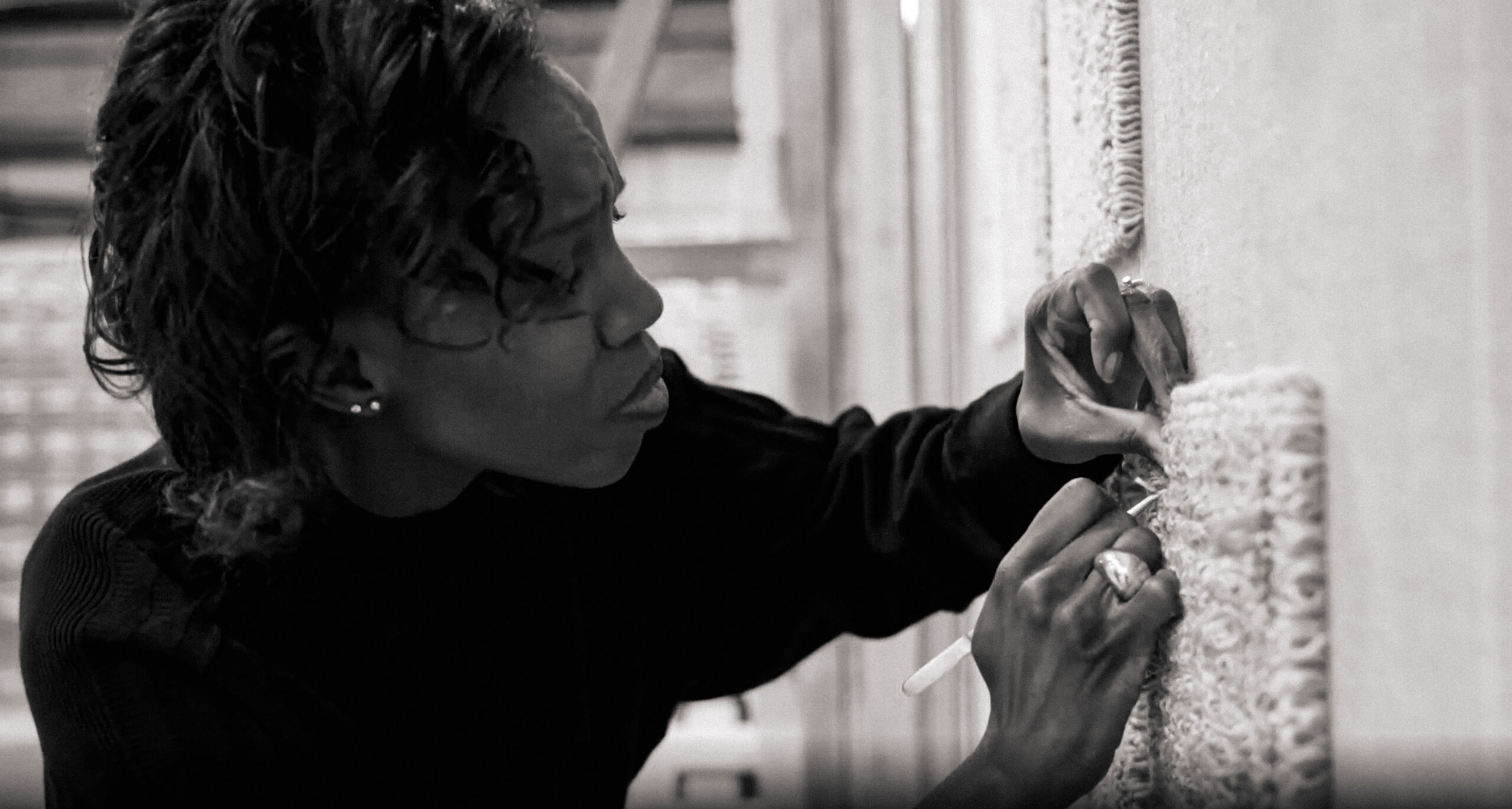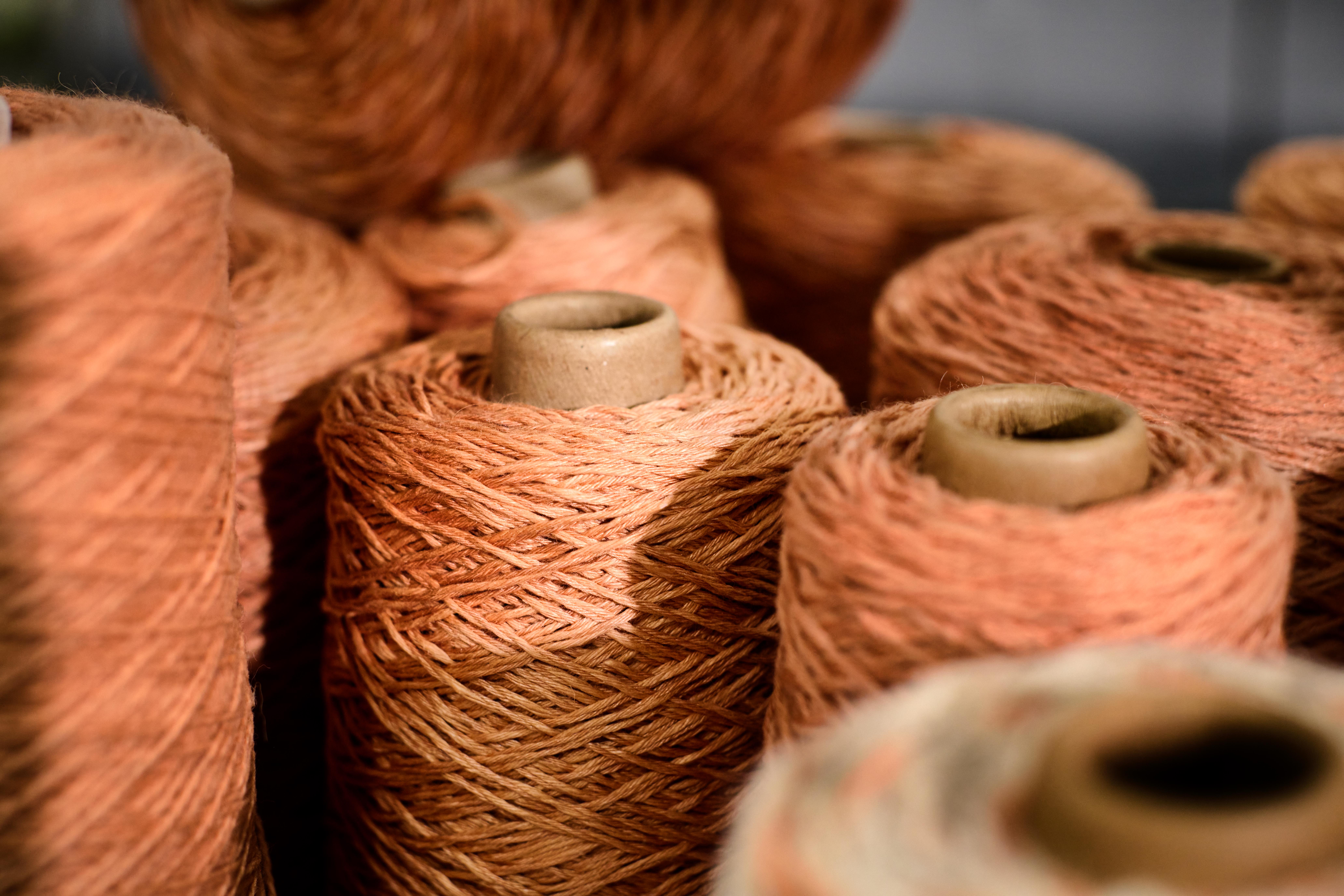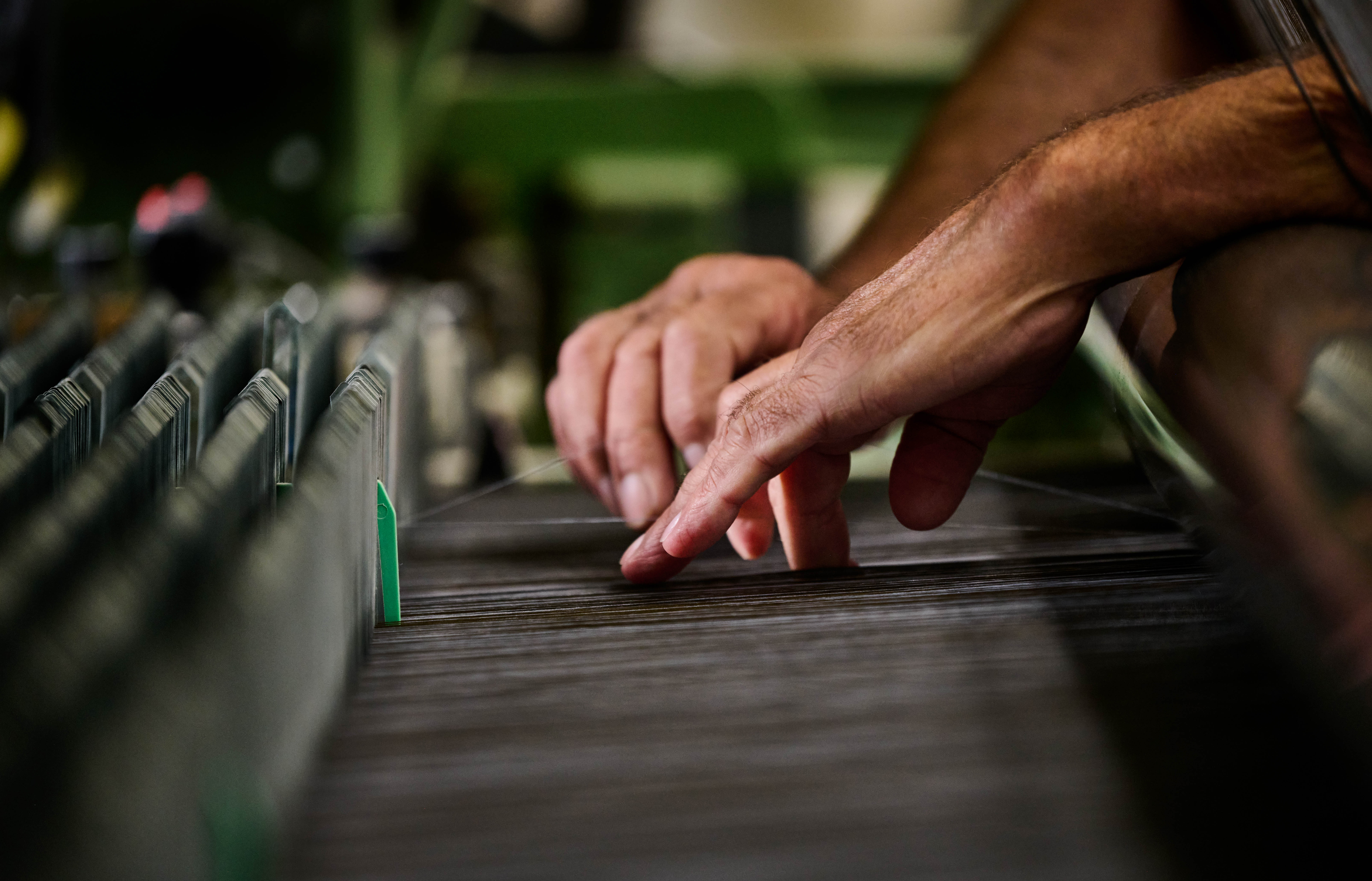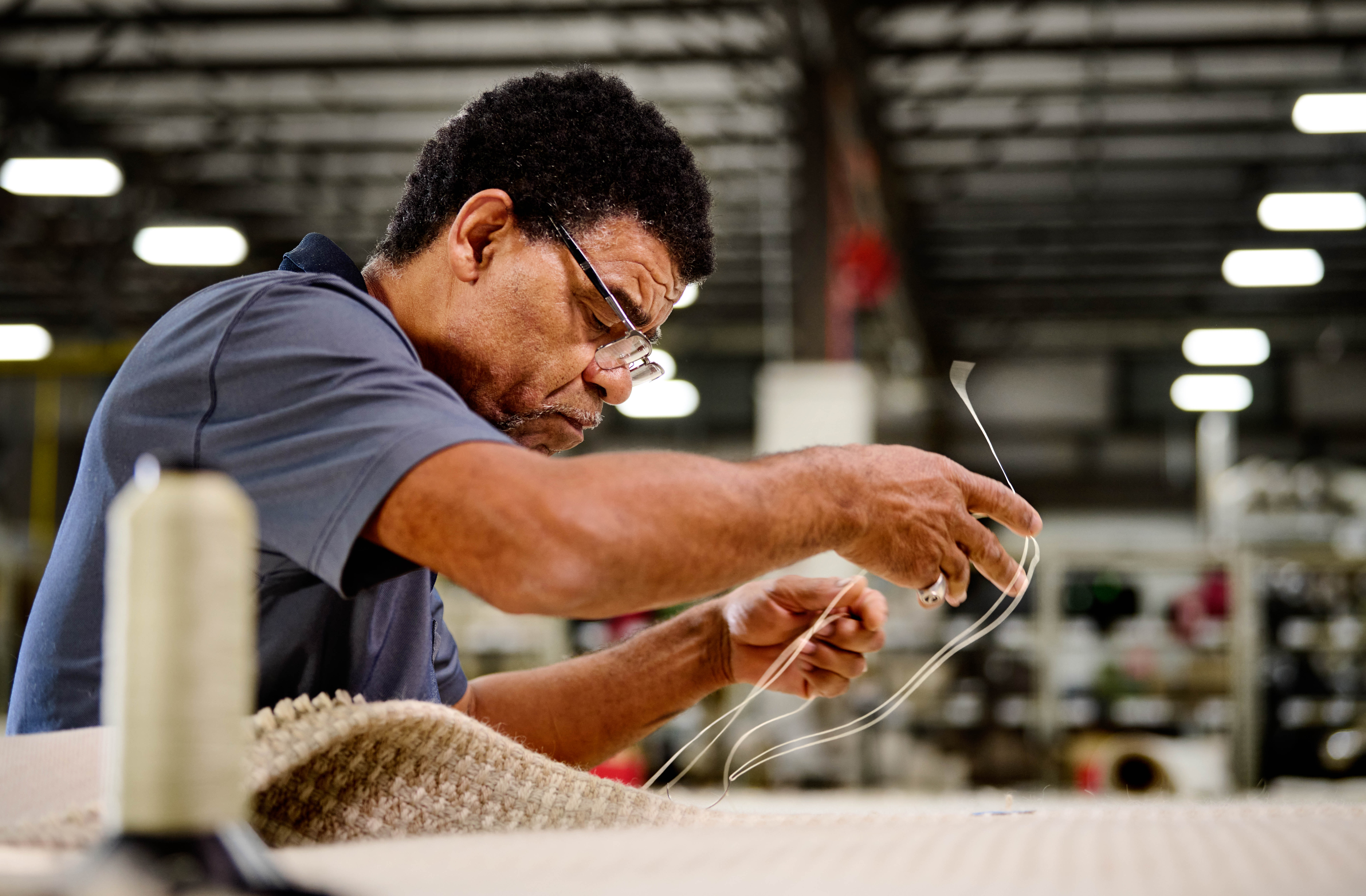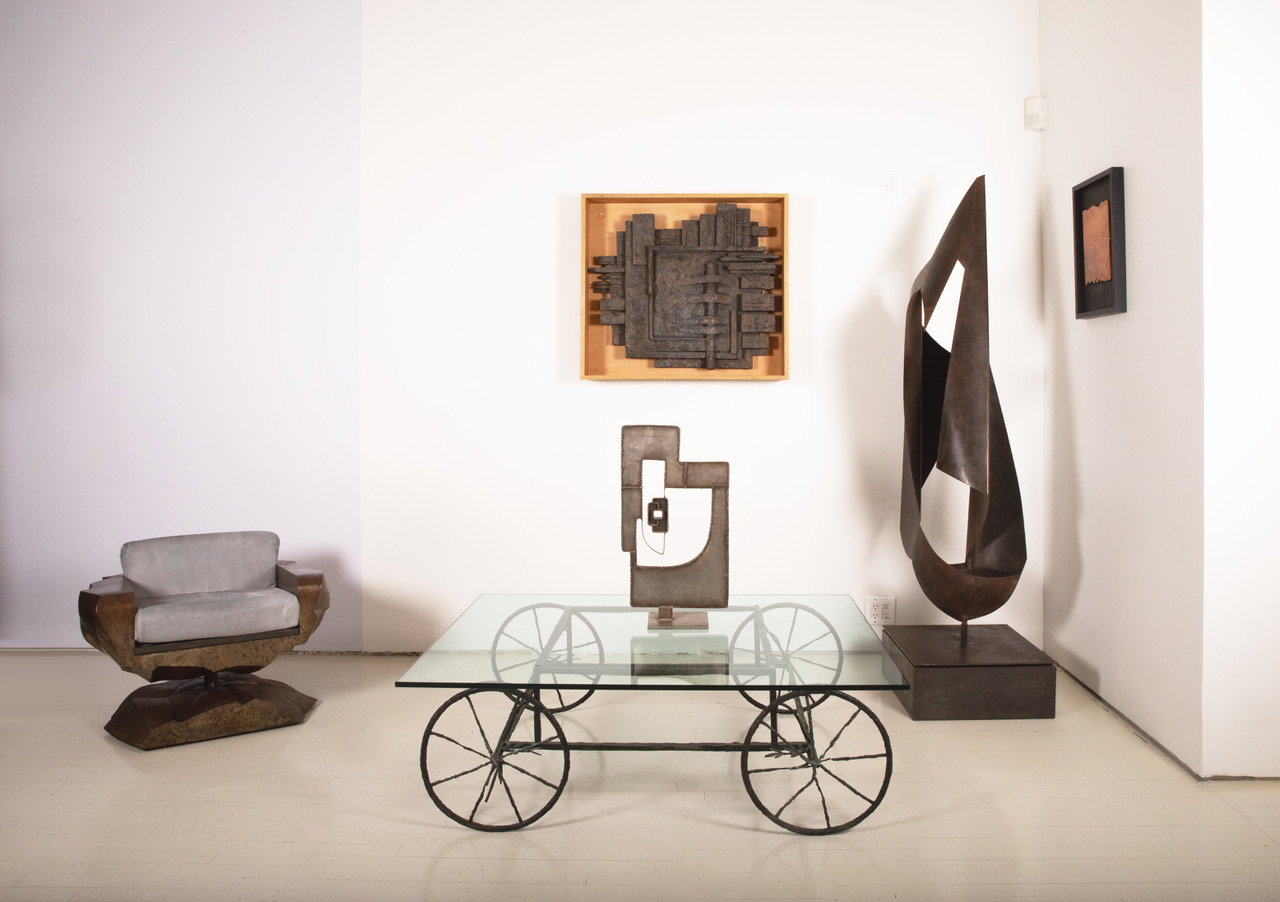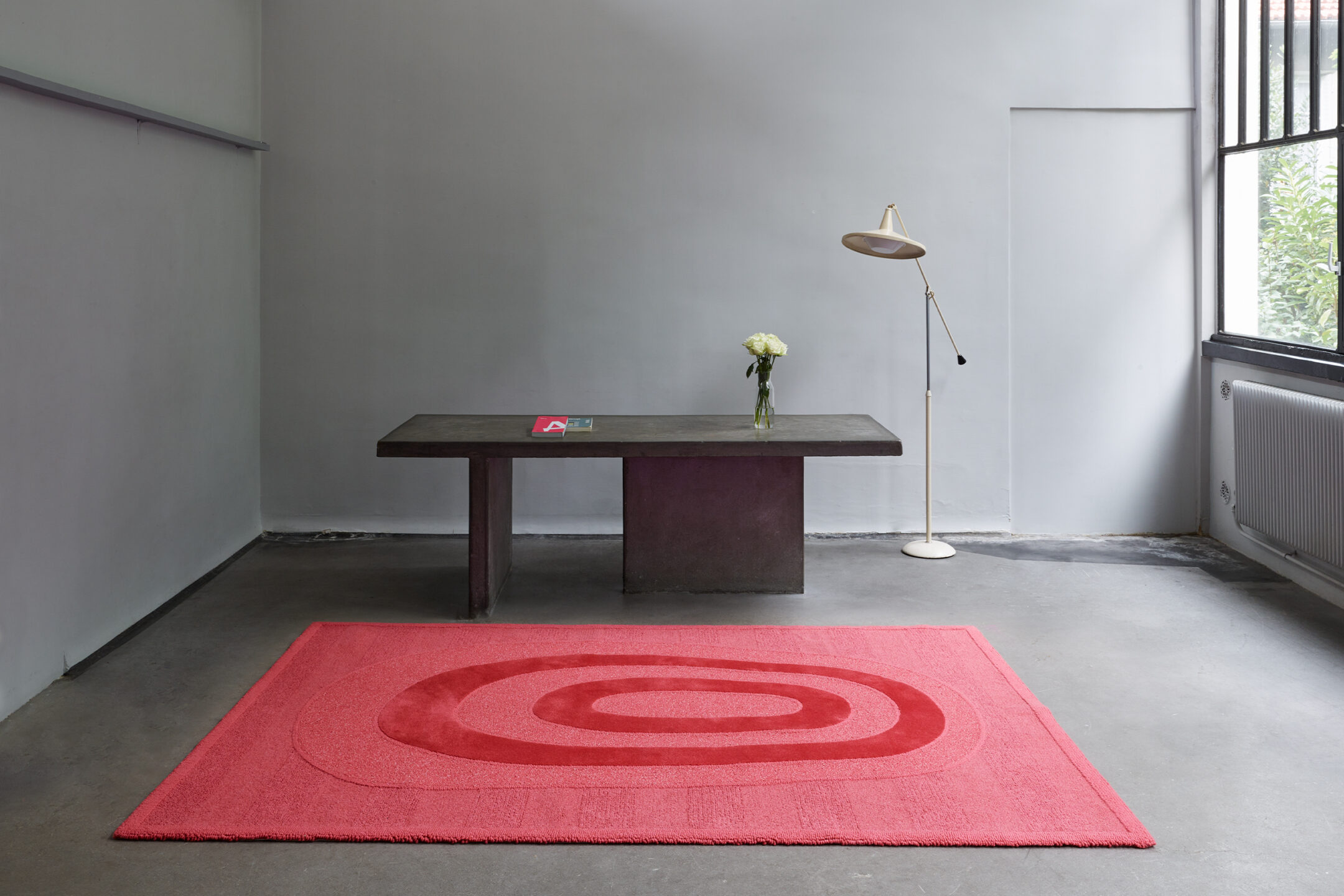The Art of Light
“The rhythm of light is the rhythm of life.”
— Sylvie Johnson, Artistic Director
In December, Merida launched its newest collection, Atelier 2021, which takes inspiration from artists whose work explores the dialogue between light and shadow in nature. We spoke with Artistic Director Sylvie Johnson about her vision for the collection, and how light plays a transformative role in these one-of-a-kind rugs.
Q: The new collection is inspired by artists working with the concept of light and shadow. How does their work translate to textiles?
A: The inspiration for Atelier 2021 is art in dialogue with nature. When you look at land installations by Richard Long or Andy Goldsworthy, or an outdoor sculpture by Anish Kapoor, they are working with the landscape, and the continual interplay of light and shadow over the course of a day, from sunrise to sunset, and from season to season. Similarly, these rugs are a bridge between art and architecture, not only in how the natural yarns reflect light and interact with each other, but also in the shadows formed by the construction. When the rug is on the floor you experience it differently throughout the day: the way it changes in the light, where it is placed in the room, how it interacts with the décor. It is the difference between art that is made to be shown in a gallery or museum where the light is controlled, and textiles that are made for a living, breathing space where they are in conversation with the windows, the furniture, and the architectural details of the home. The rhythm of light is the rhythm of life.
Q: What does originality mean to you?
A: Originality doesn’t mean creating something from thin air. It comes from knowing and understanding what has come before us – the cultural traditions, the great works of art and literature that have informed generations of artists and thinkers – and making it your own. James Turrell didn’t invent the idea of using light as a sculptural element, he took an ancient idea in a new direction. When we design textiles we are building on ancient traditions of weaving as well as the layers of art and architecture that we are drawing from, consciously or unconsciously. Every rug we make is a celebration of that history, and the hands and minds that shape and reshape it.
Q: When designing a collection, where do the weavers come in? Does their knowledge inform or change the original design?
A: The art we are referencing is art by makers. Many makers. At Merida we also have many makers. When we start a new collection, I fill my notebook with drawings and detailed notes, then test the ideas on a dobby loom first, because I need to be sure the idea can work before I bring it to the team. Then the design team creates the graphics and works with our weavers to prototype each rug. Our craftsmen bring decades of experience and are always developing new techniques, from ways to set up the loom to handwork and finishing. It’s that daily practice that gives us the confidence to try new things, to say let’s try something no one has done before. New ideas are born in the workshop every day, and everything we make is the result of practice, training, and rigorous testing – the time Merida invests in R&D. That time and space to innovate is something most manufacturers don’t allow for because time is money. But that investment is what makes a Merida rug different from anything on the market. When you touch these rugs you can feel everything that went into making them, from the combinations of yarns to the layers of art, architecture, and culture. You feel the hands of the makers doing their best work.
